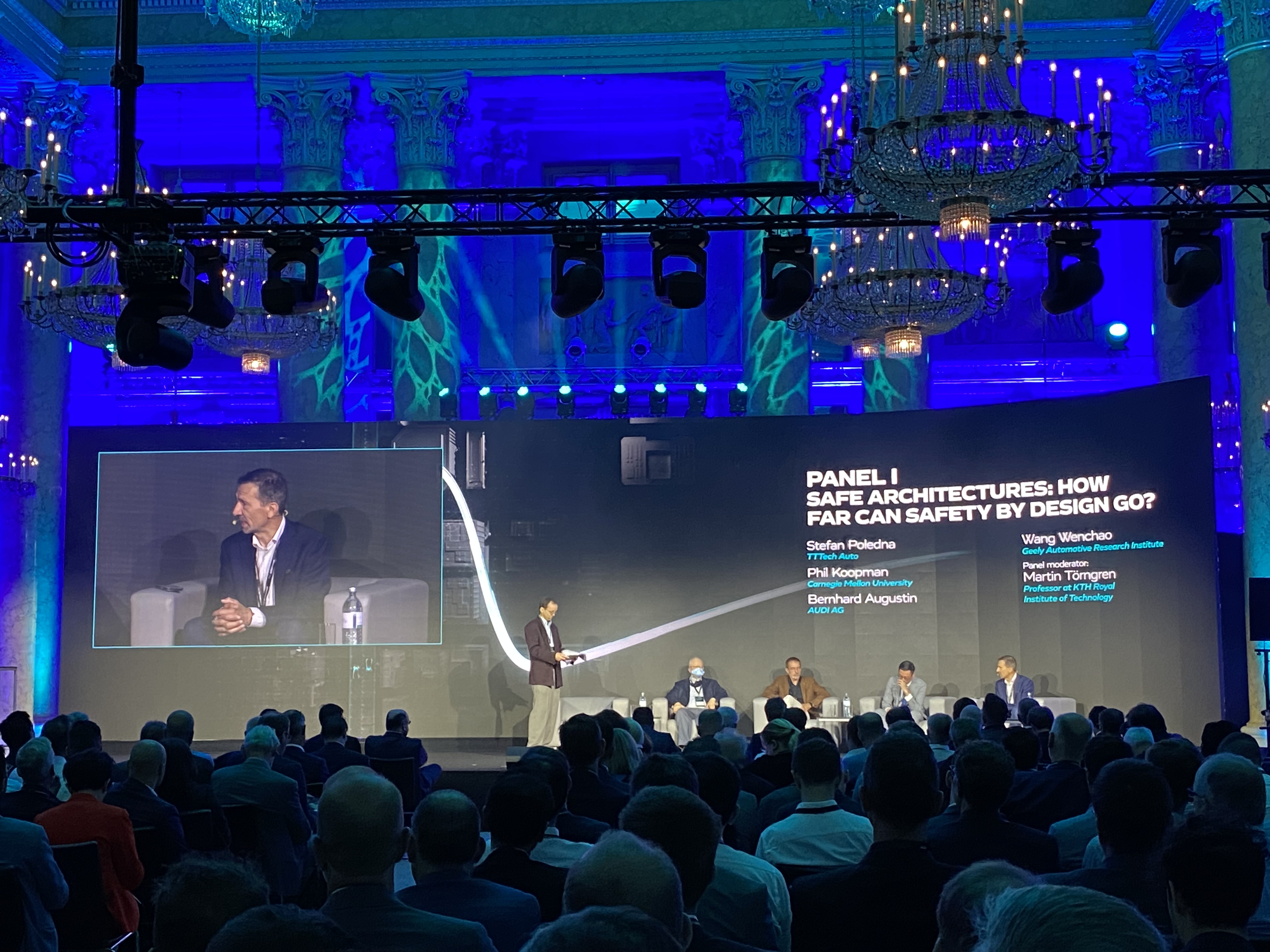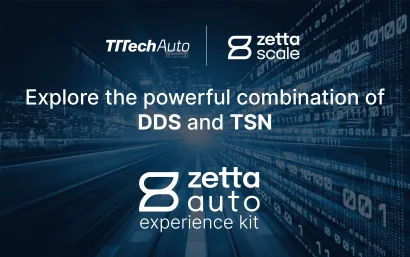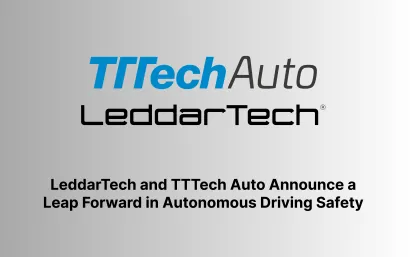Safety architectures are at the forefront of the discussion when it comes to the development and implementation of safe, secure, and highly automated software-defined vehicles (SDV). The critical question that looms large in this context is: How far can safety by design go to ensure the well-being of passengers, pedestrians, and the overall transportation ecosystem.

At The Autonomous Main Event 2023, we engaged in an insightful panel discussion titled 'Safe architectures: how far can safety by design go?' This dynamic conversation brought together world-renowned experts in the field, who delved into the profound question of just how far safety by design can be pushed in the realm of autonomous vehicles. Stefan Poledna (CTO TTTech Auto), Phil Koopman (Carnegie Mellon University), Bernhard Augustin (AUDI AG) and Wang Wenchao (Geely Automotive Research Institute), well moderated by Martin Törngren (KTH Department of Machine Design), illuminated crucial considerations in the design of safe vehicles by addressing the central question of our discussion.
With this article we dive deeper into their profound insights, highlighting the critical importance of prioritizing safety right from the outset. It underscores the significance of adhering to key design principles and ways how to achieve them when designing next-generation vehicle architectures.
The safety goal: better than a human driver
As put by our CTO Stefan Poledna, we can only succeed as an industry if we define our top level goal: that we offer solutions that are significantly safer than the human drivers themselves. That seems obvious, but in fact one of the most important questions we need to ask ourselves is: How safe is safe enough? „After all, who would accept vehicles that are less safe and secure than a human driver? That is simply not acceptable.“, says Stefan Poledna.
We already know that this system must be designed as an ultra high reliable system which may not fail more frequently than, say, 10^-8 failures per hour, which is about once every ten-thousand years. In this case, there is a high probability that a driver will never experience a system failure.
However, this goal imposes certain challenges because such a complex system is built from many components which individually fail much more frequently. This points out the importance of designing our systems with key design principles in mind.
Key design principles for safe vehicle architectures
Key design principles for safe autonomous vehicles encompass a multi-layered approach that goes beyond mere redundancy, including diversity to address single component failures, and finally freedom from interference to enable a mixed criticality environment in the vehicle. In addition, to provide safe experience in such a complex machine on wheels, we also need a monitoring architecture that oversees the vehicle's behavior right from the start.
"We need to take care of not only generating a trajectory, but to ensure that the trajectory is safe. We also need a minimum risk maneuver, a backup trajectory to bring this vehicle to a safe state, in case of a potential danger.", Stefan continues, emphasizing the importance of considering various aspects when designing a safe highly automated vehicle.
These principles are fundamental for ensuring the safety and reliability of autonomous vehicles in a variety of scenarios. By embracing them, autonomous vehicle developers and manufacturers aim to create safer, more reliable, and trustworthy vehicles that can navigate a wide range of scenarios and challenges. And ultimately pave the way for the widespread adoption of autonomous transportation.
Safe vehicle decomposed
Wang Wenchao, Chief engineer of GEEA 3.0 architecture, and Chairman of software technology committee at Geely Automotive, highlighted 4 main aspects to consider when designing a safe vehicle:
• Architectural level taking care of vehicle-level accross-ECU communication;
• Hardware providing the end-to-end functionality of a vehicle;
• Software bringing differentiation to users, enabling the era of software-defined vehicles;
• Data being the main validator of system safety.
Expanding on the last point, he states that the dataset can answer which design we want to look at, and if the safety is really achieved. „Database is the central part of these four layers“, Wang Wenchao concludes.
Different mindset
Phil Koopman, associate professor at Carnegie Mellon University, stressed the importance of a shift in thinking across the industry to consider safety throughout a vehicle's lifecycle, saying, „We are used to seeing an automotive that the day you ship the car, there's this useful fiction that it's safe“.
However, the 'we know it's fiction, but it's close enough' mindset will no longer do the work. We need to change our perception about vehicles and keep track of them during the entire lifecycle. Phil continues, „I would say that safety by design has to go all the way to an engineering document that lives for the life of the vehicle.“
Also, with the advent of AI in the automotive industry, Bernhard Augustin, Head of development and integration of ADAS/AD sensors and compute platform at AUDI AG argues for validation and verification to move in the same direction of increased lifecycle orientation: „We need to change our verification and validation approaches by not being static, but accepting the challenge that we have to adapt.“
It's all about the architecture and culture
Safety must happen from the top down; we must anchor safety at the very beginning of our journey to safe autonomous vehicles. The automotive practices need to embrace change and continually adapt, all the way to the vehicle on the road and beyond.
Safety is not happening bottom up. It has to happen from the top down. It's about culture, it's about architecture.
Stefan Poledna, CTO TTTech Auto
It is of utmost importance to look at vehicles holistically, not only the software, but the entire system with the safety and security rules applied. Therefore, we must consider system, software, safety and security (4SDV) to realize a truly safe software-defined vehicle.
We acknowledge that meeting this challenge relies on strong partnerships, idea sharing, and knowledge exchange. We must collaborate to create safe vehicle solutions and drive progress in the automotive industry - together!
Safety & Architecture Working Group: the collaboration platform for safe vehicle architectures
TTTech Auto, in collaboration with distinguished industry leaders and academic representatives, has played a pivotal role in shaping the conceptual system architecture for autonomous vehicles operating at SAE Level 4 and beyond.
The groundwork for this achievement was laid when the Safety & Architecture Working Group convened in June 2021. Now, after two years of dedicated efforts, the Working Group delivered its first digest report. Explore the findings here and stay tuned for the full report by the end of 2023.
Don't miss our recap article with key findings from a variety of keynotes and panel discussions at The Autonomous Main Event. We also invite you to experience the breathtaking moments of the Event in our highlights video.



